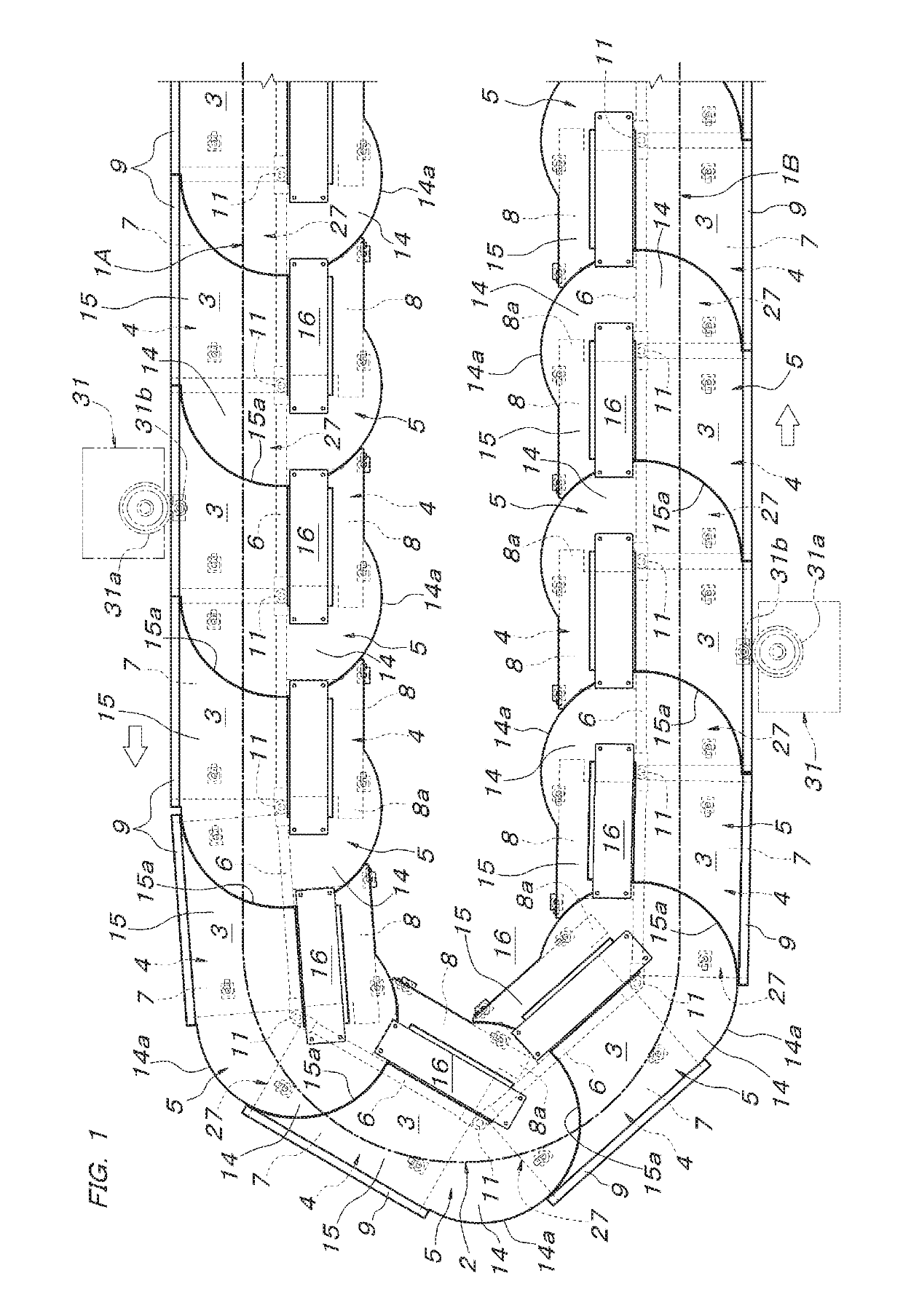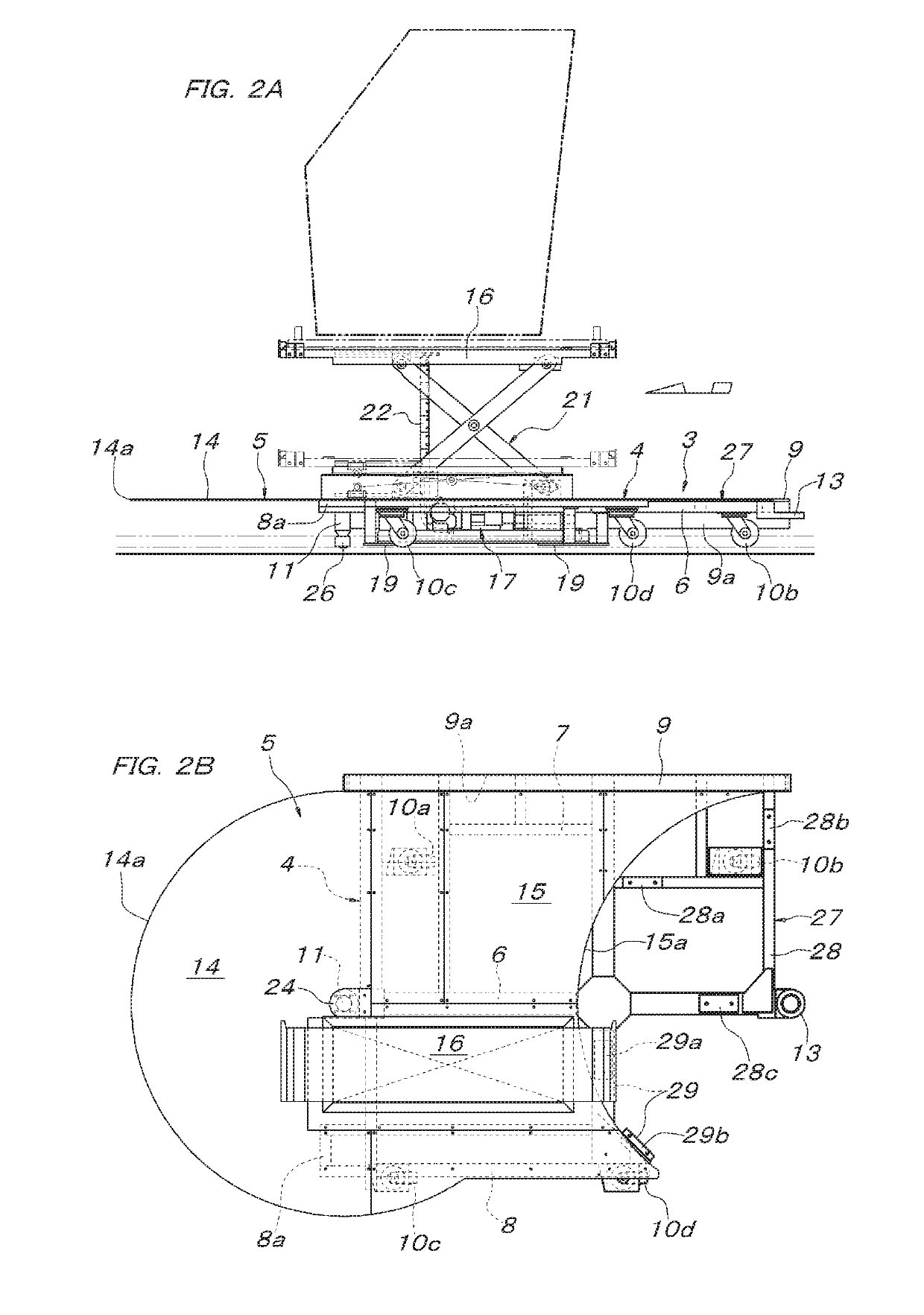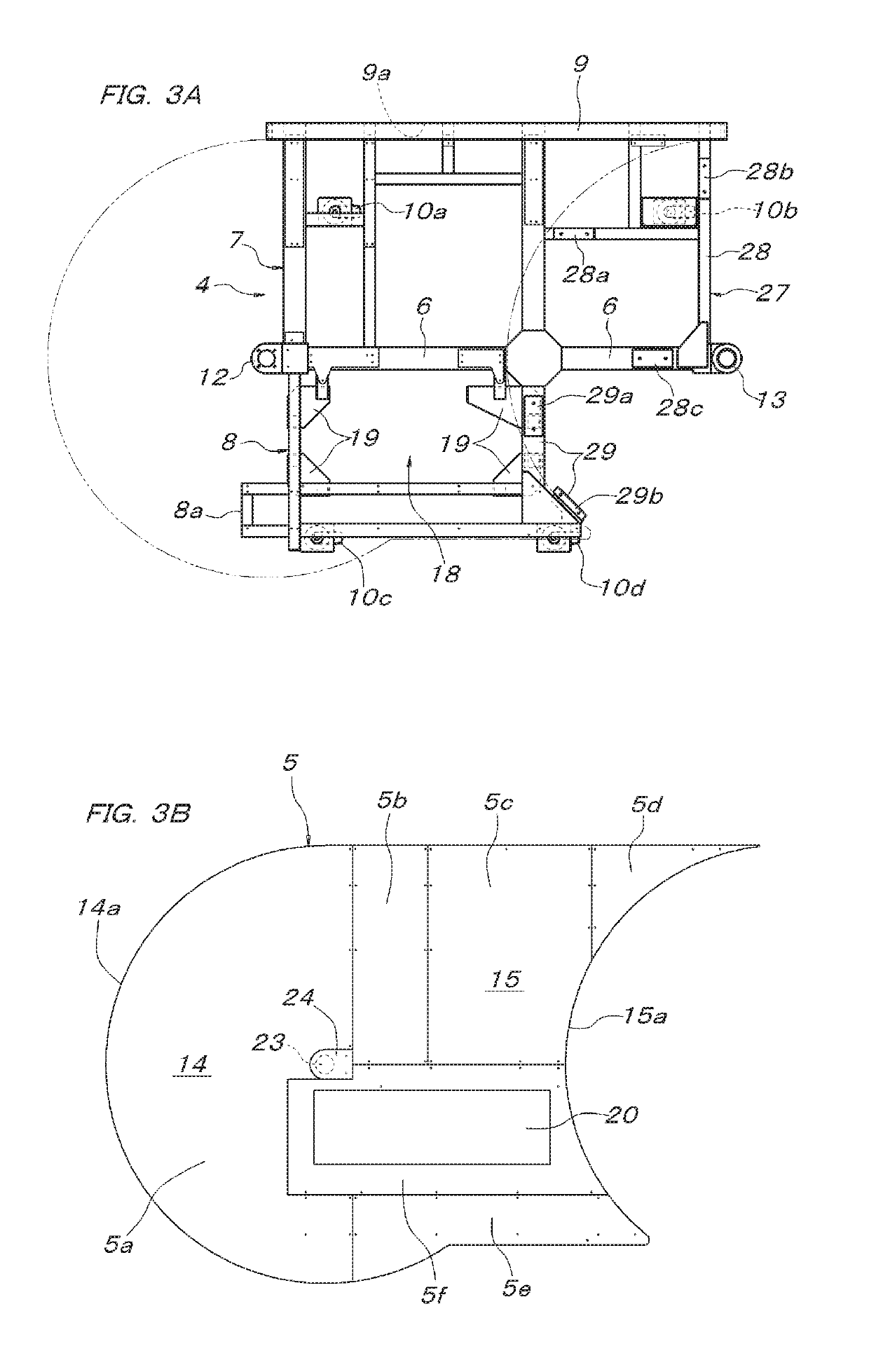Carriage-utilizing conveying equipment
a technology of conveying equipment and conveying shafts, applied in mechanical conveyors, lifting devices, railway components, etc., can solve the problems of time-consuming and costly maintenance and inspection, abnormal noise generation, etc., and achieve the effect of simple configuration, extremely inexpensive implementation, and low cos
- Summary
- Abstract
- Description
- Claims
- Application Information
AI Technical Summary
Benefits of technology
Problems solved by technology
Method used
Image
Examples
Embodiment Construction
[0015]An embodiment of the present invention will be described below with reference to FIGS. 1 to 5B, and in this embodiment, the present invention is implemented as conveying equipment including workpiece-conveying carriages which travel on a circulation traveling path formed with two parallel reciprocating linear path sections and leftward-curved horizontal curved path sections that connect together the two reciprocating linear path sections at both ends thereof. FIG. 1 shows a state of respective carriages 3 which travel in a traveling path region extended from an outward linear path section 1A through the horizontal curved path section 2 that makes a U-turn of 180 degrees to a return linear path section 1B.
[0016]The structure of the carriage 3 will first be described. The carriage 3 is formed with a frame portion 4 and a floor board portion 5 which is laid on the frame portion. The frame portion 4 is formed with a rod-shaped center member 6 which is formed with a rectangular ste...
PUM
 Login to View More
Login to View More Abstract
Description
Claims
Application Information
 Login to View More
Login to View More - R&D
- Intellectual Property
- Life Sciences
- Materials
- Tech Scout
- Unparalleled Data Quality
- Higher Quality Content
- 60% Fewer Hallucinations
Browse by: Latest US Patents, China's latest patents, Technical Efficacy Thesaurus, Application Domain, Technology Topic, Popular Technical Reports.
© 2025 PatSnap. All rights reserved.Legal|Privacy policy|Modern Slavery Act Transparency Statement|Sitemap|About US| Contact US: help@patsnap.com



